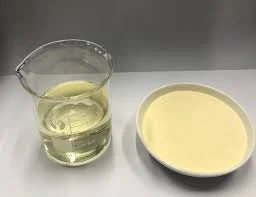In recent years, the use of hydrolyzed complex amino acids has gained significant attention in various industries, including agriculture, food production, and pharmaceuticals. Hydrolyzed complex amino acids are derived from the hydrolysis of proteins, resulting in a mixture of smaller peptides and free amino acids. In this blog post, we will analyze the composition and nutritional components of hydrolyzed complex amino acids, shedding light on their benefits and applications.
Composition of Hydrolyzed Complex Amino Acids
Hydrolyzed complex amino acids are composed of a wide range of amino acids, including both essential and non-essential ones. Essential amino acids are those that cannot be synthesized by the body and must be obtained through diet, while non-essential amino acids can be synthesized by the body itself.
The exact composition of hydrolyzed complex amino acids varies depending on the source material used for hydrolysis. Common sources include plant-based proteins like soy, wheat, and corn, as well as animal-based proteins like fish, poultry, and gelatin. Each source brings its own unique amino acid profile, making hydrolyzed complex amino acids a versatile and customizable product.

Nutritional Components of Hydrolyzed Complex Amino Acids
1.Essential Amino Acids: Hydrolyzed complex amino acids contain all the essential amino acids required by the human body. These include histidine, isoleucine, leucine, lysine, methionine, phenylalanine, threonine, tryptophan, and valine. Essential amino acids play a crucial role in protein synthesis, muscle growth, and overall health.
2.Non-Essential Amino Acids: In addition to essential amino acids, hydrolyzed complex amino acids also contain non-essential amino acids such as alanine, arginine, aspartic acid, glutamic acid, glycine, proline, and serine. Non-essential amino acids contribute to various physiological processes, including immune system function and tissue repair.
3.Peptides: Hydrolysis of proteins leads to the formation of peptides, which are short chains of amino acids. These peptides have unique biological activities and can act as antioxidants, antimicrobial agents, or even hormone regulators. The presence of peptides in hydrolyzed complex amino acids adds to their nutritional and functional value.
Benefits and Applications of Hydrolyzed Complex Amino Acids
1.Enhanced Plant Growth: Hydrolyzed complex amino acids have been widely used in agriculture to promote plant growth and improve crop yields. The amino acids present in hydrolyzed complex amino acids act as building blocks for plant proteins, stimulating growth and development. Additionally, the peptides derived from hydrolysis contribute to improved nutrient absorption and stress tolerance in plants.
2.Animal Feed Supplements: Hydrolyzed complex amino acids are also beneficial as feed supplements for livestock and poultry. The balanced amino acid profile supports animal growth, muscle development, and overall health. Additionally, the presence of peptides aids in better digestion and nutrient utilization, leading to improved feed efficiency.
3.Sports Nutrition: Hydrolyzed complex amino acids have gained popularity in the sports nutrition industry. Athletes and fitness enthusiasts often consume them as supplements to support muscle recovery, reduce muscle soreness, and enhance performance. The rapid absorption and availability of amino acids in hydrolyzed form make them an ideal choice for post-workout recovery.
4.Nutraceuticals and Pharmaceuticals: Hydrolyzed complex amino acids find application in the production of nutraceuticals and pharmaceuticals. The bioactive peptides derived from hydrolysis possess various health benefits, such as antioxidant, anti-inflammatory, and antimicrobial properties. They are used in the formulation of dietary supplements, functional foods, and pharmaceutical preparations.

Conclusion
Hydrolyzed complex amino acids are a valuable source of essential and non-essential amino acids, as well as bioactive peptides. Their composition and nutritional components make them highly versatile and beneficial for various industries. From promoting plant growth to improving animal health and supporting human performance, hydrolyzed complex amino acids have a wide range of applications. As a company at the forefront of amino acid production, Sempoll is committed to providing high-quality hydrolyzed complex amino acids that meet the diverse needs of industries worldwide.
